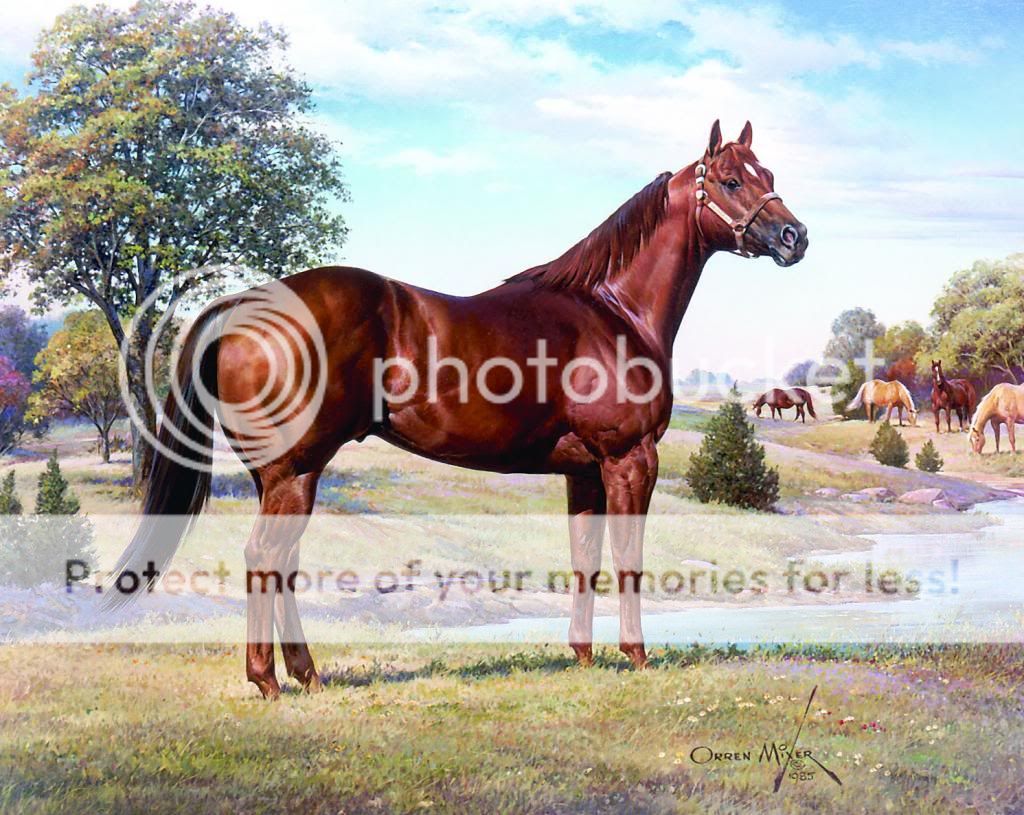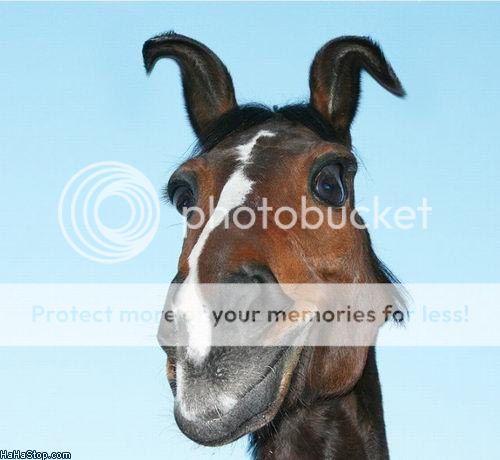I have always loved the classic, ranch/performance type American Quarter Horse. About as close to the perfect balance of power, speed, agility, soundness, energy, sane disposition, and beauty that can be achieved in horse breeding. Resulting in an animal of great versatility. The best horse there is for a number of things, and pretty darned good at a great many more.
So, naturally, breeders have been trying to produce extra-tall Quarter Horses for many years... Which gives us some problems.
First, the very concept involves warping the Quarter Horse out of his traditional standard. A Quarter Horse has no more business being 16+ hands tall than a fish has being covered with feathers or a cat has wearing antlers.
Quarterhorse?
Second, since selecting for height means neglecting other factors, the result is often far from the scaled-up Quarter Horse people wanted. I've seen 17+ hand AQHA registered horses, and they usually look like they were assembled from leftover camel parts.
I don't know if there have been any scientific studies to back this up, but as a farrier I observed that, for every inch of height above 15-2 in a Quarter Horse, there is an exponential increase in the probability of unsoundness. I doubt it's a coincidence that the trend for 16+ hand AQHA horses in the '80s corresponded to the Quarter Horse, once renowned for soundness, becoming known as a breed for which support shoeing, isoxsuprine, bute, and neurectomy were considered almost normal!
So, rather than distorting the great old Quarter Horse beyond recognition to produce unsound specimens with AQHA paperwork, we decided to go outside the AQHA system to satisfy the demand for something akin to a super-sized Quarter Horse.
Starting with sound, highly athletic, well-bred Quarter Horse stallions, we looked for mares who could contribute the desired stature to the mix without introducing TB fragility... And the best candidates we found were pedigreed, carriage-type Belgian draft mares. They brought greater than TB height to the table, along with over-engineered hooves, joints, tendons, and ligaments.
The goal of this Quarter Horse - Belgian (Quargian) crossbreeding is to produce great American sport horses. Essentially Quarter Horses scaled-up to warmblood size without the conformation and soundness drawbacks that plague so many big Appendix Quarter Horses.
And so it begins...
.
- 30 -
...




I learned much from this post! Now I understand completely. Thank-you
ReplyDeleteI learned much from this post! Now I understand completely. Thank-you
ReplyDelete